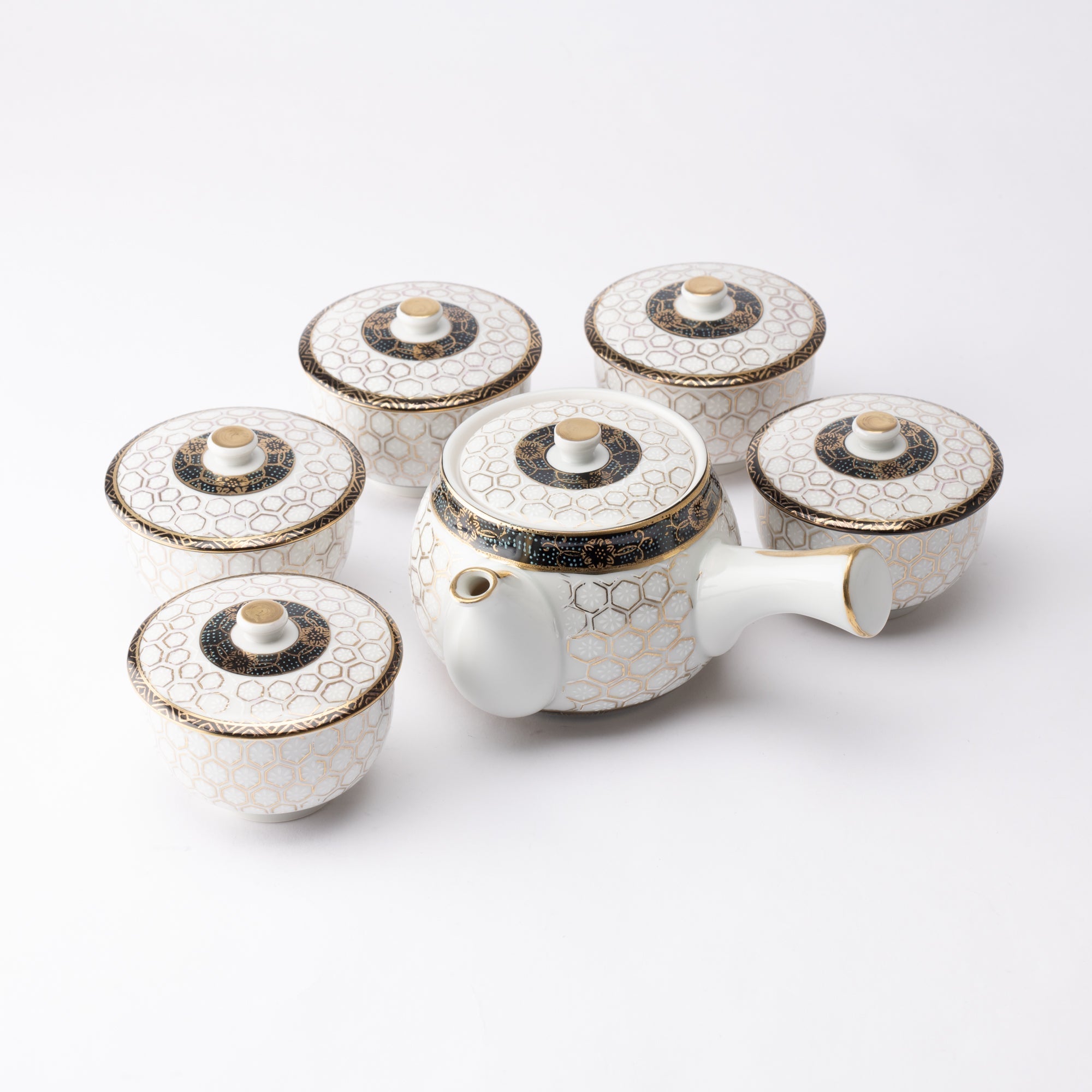

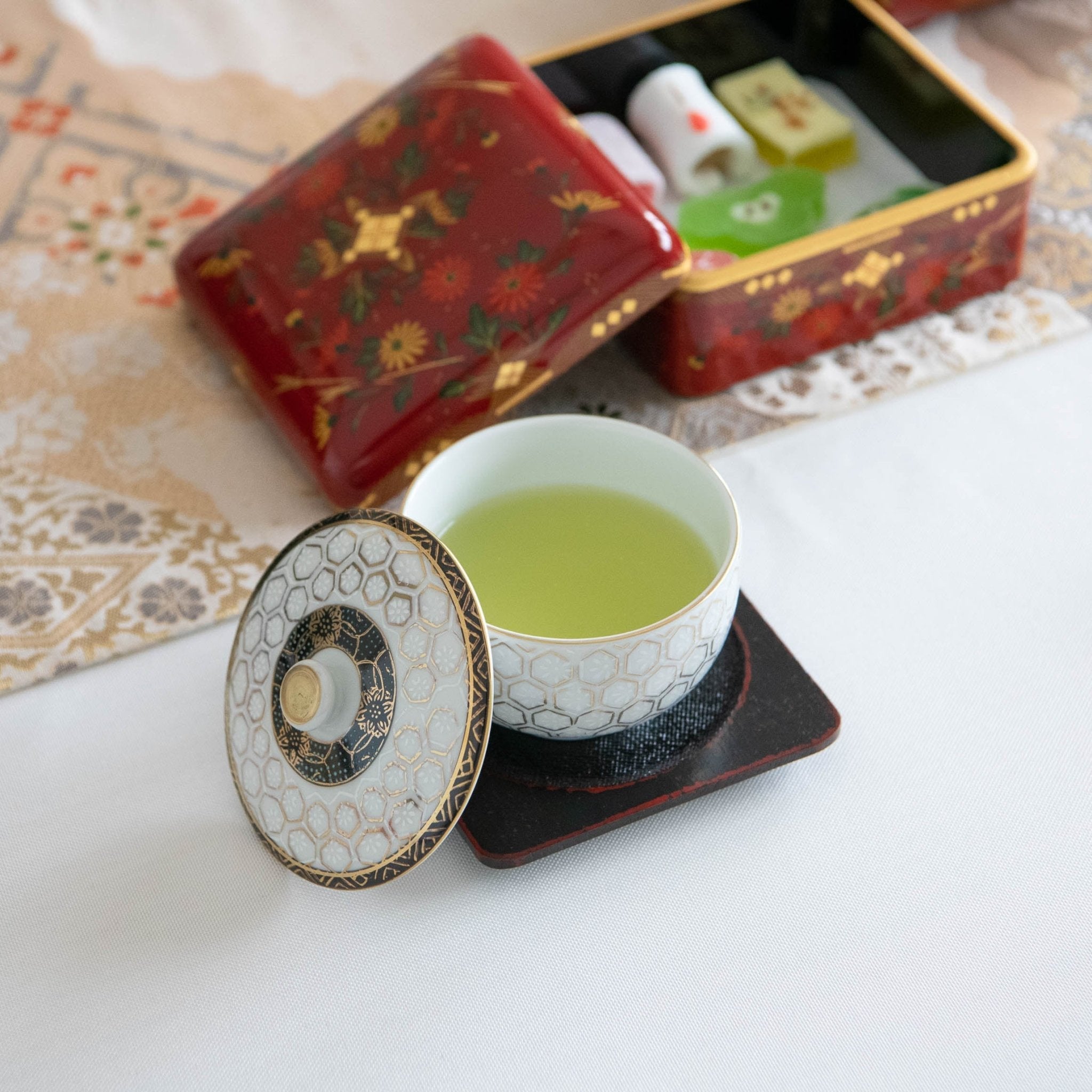


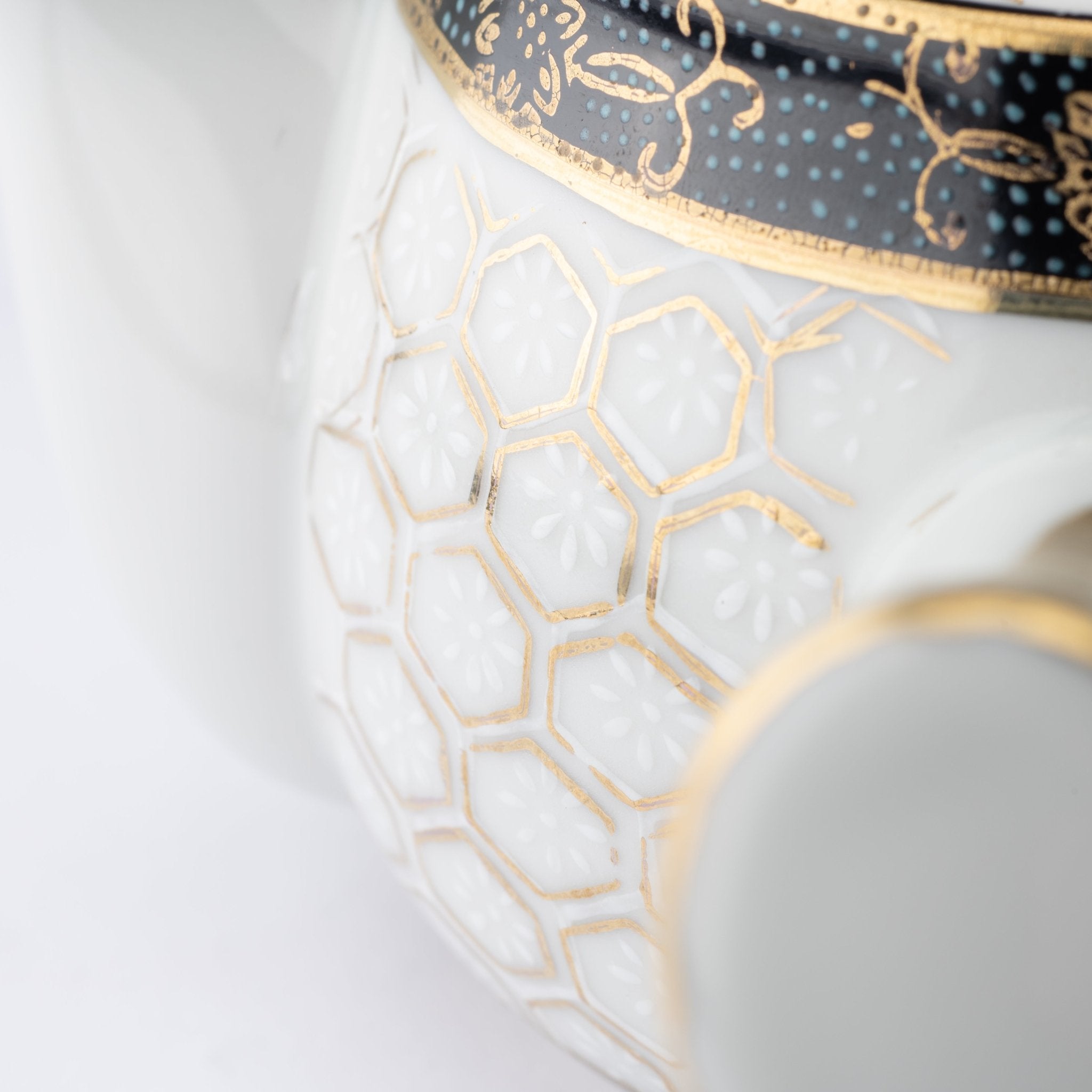
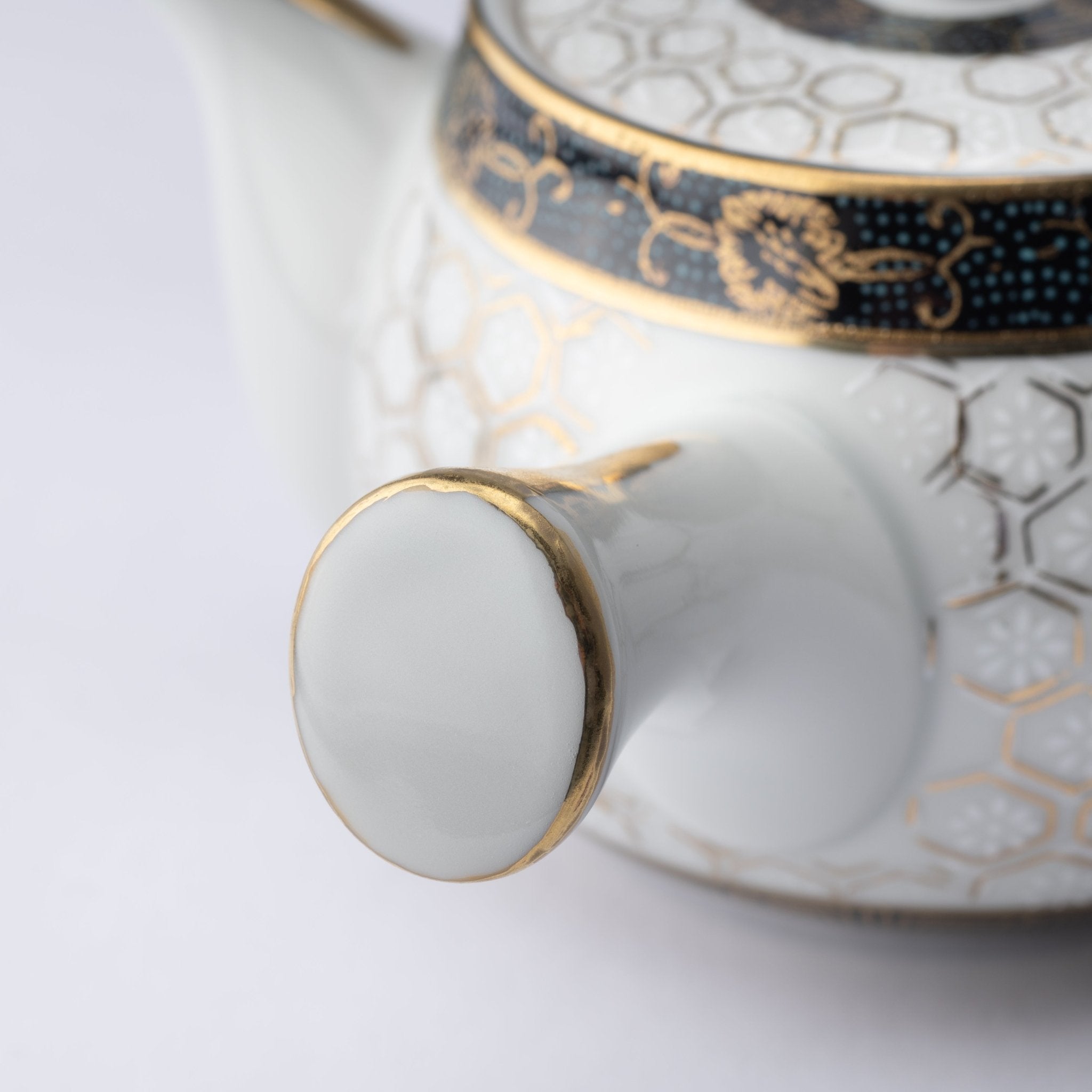



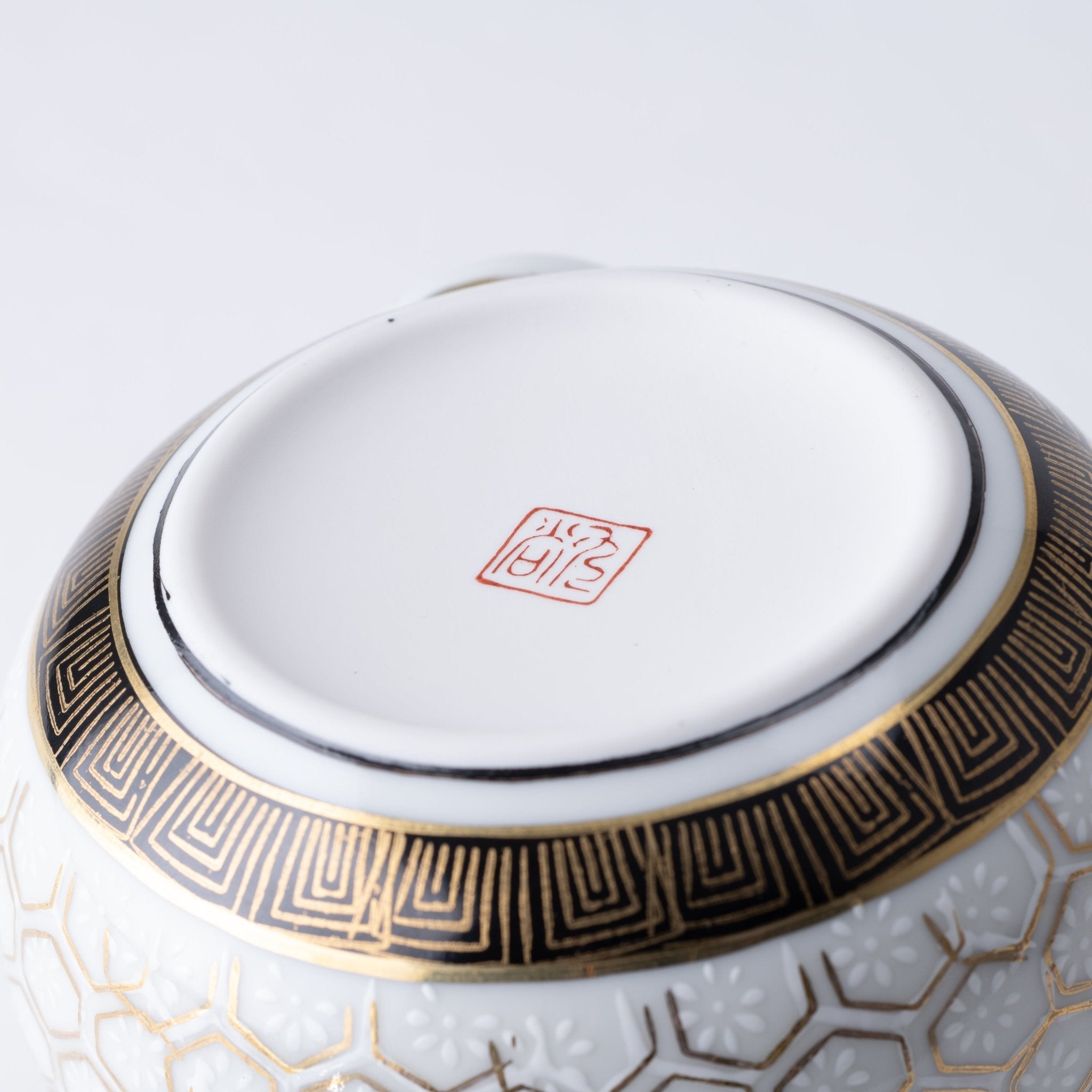
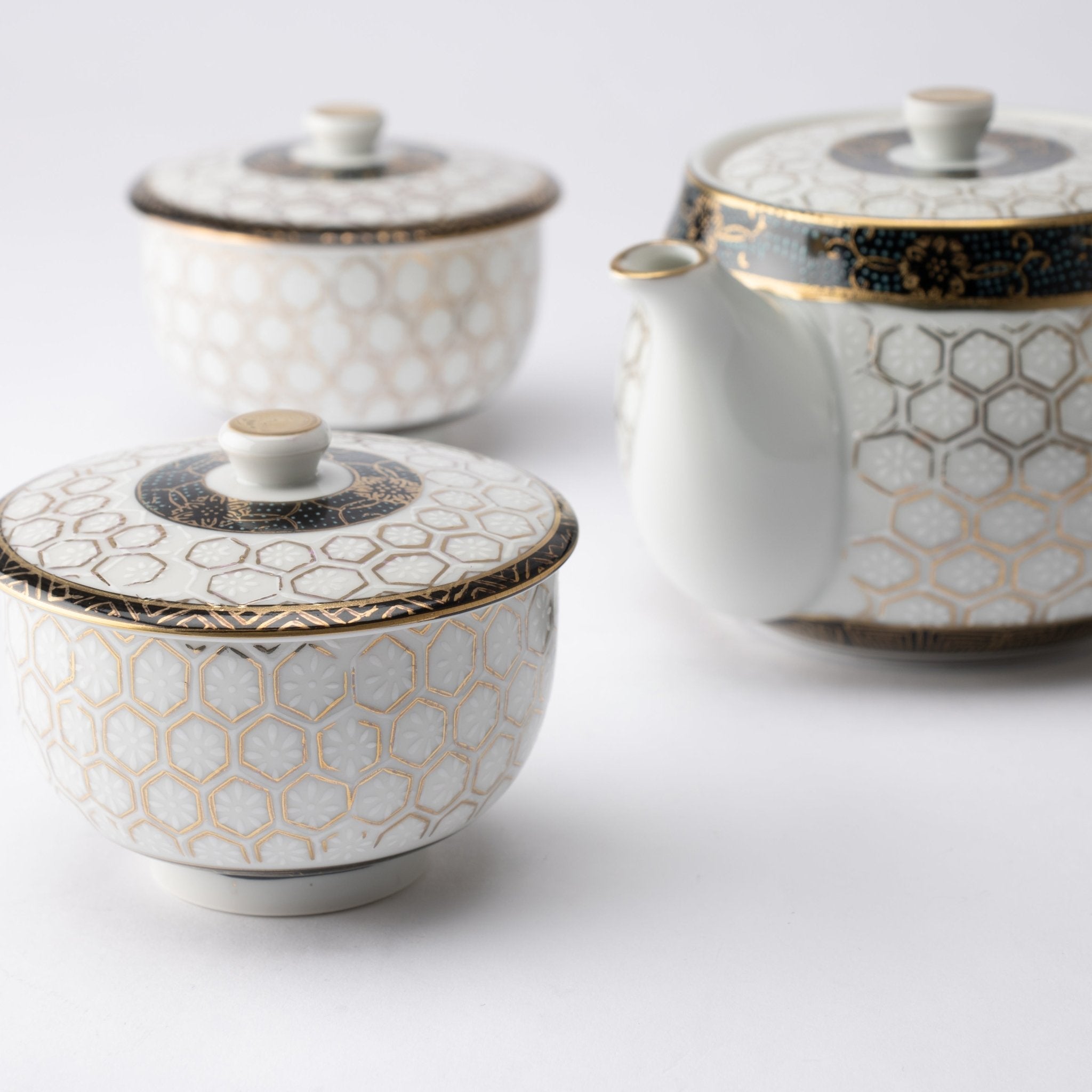


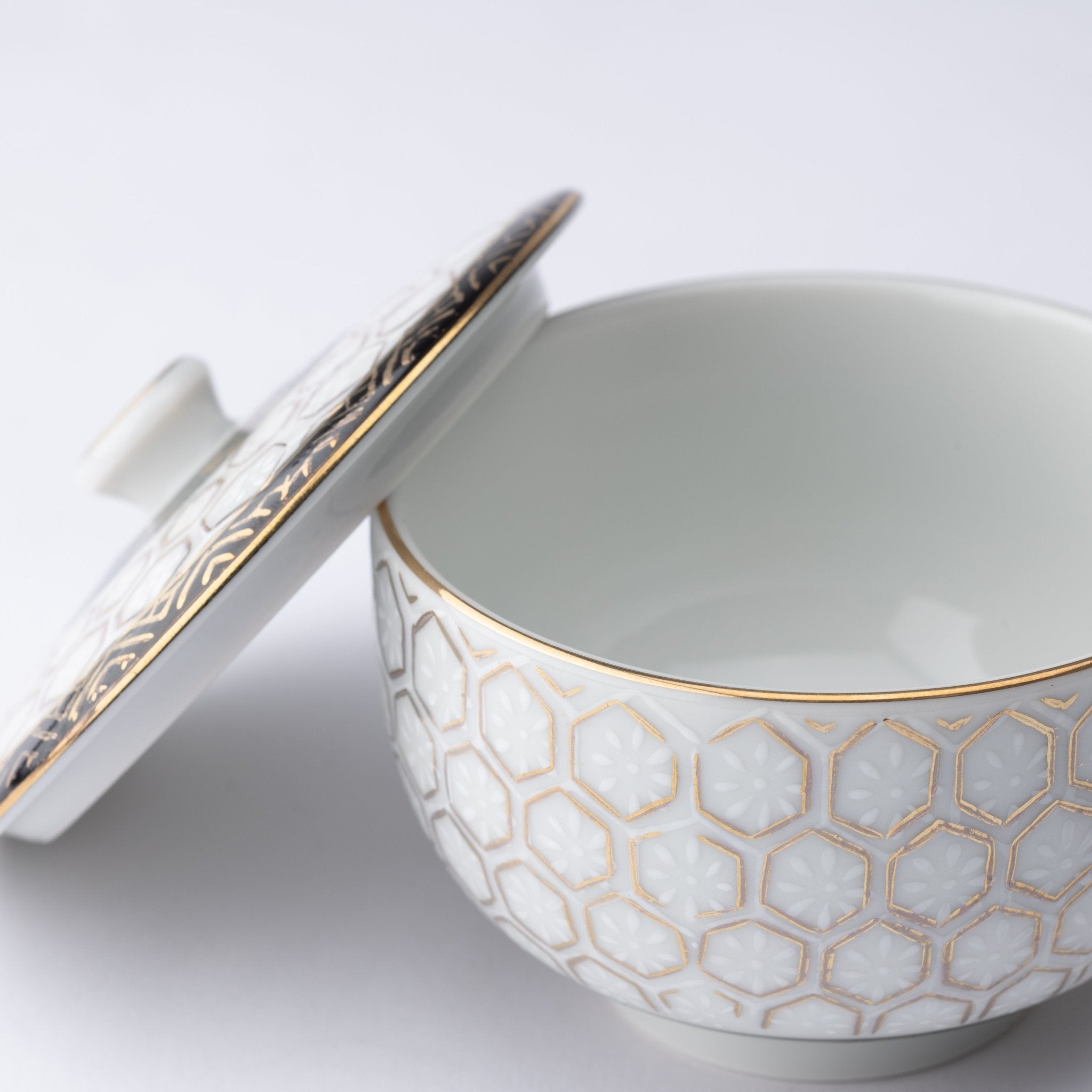
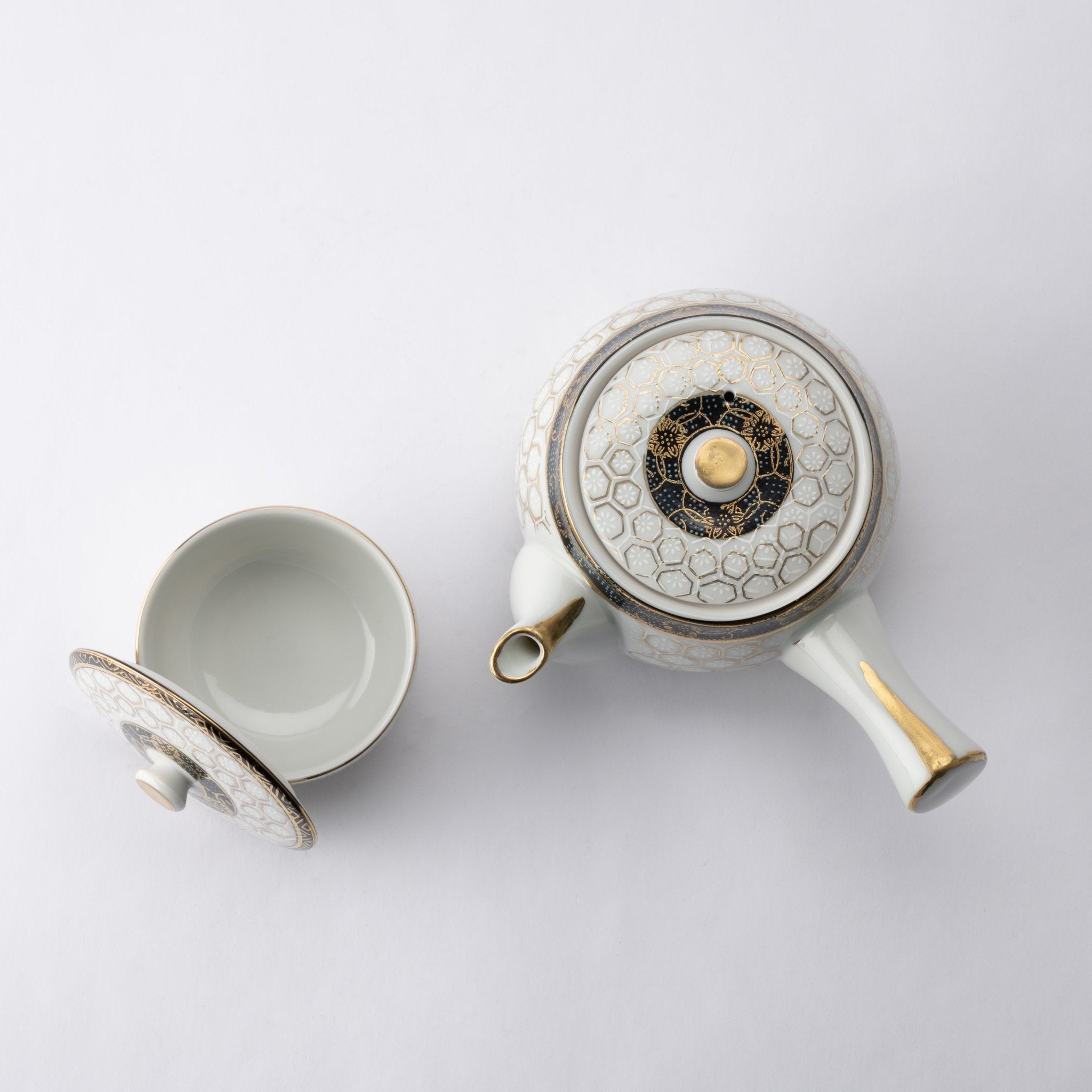
Hexagonal Pattern Kutani Japanese Teapot Set
Estimated Shipping Widget will be displayed here!
This Kutani ware teapot set features white porcelain with a gold hexagonal pattern.
The patterns here are not printed, but are produced using a special technique of stamping by hand. The patterns are not regular in nature, and some may look out of the position or blurred. In addition, the paint may adhere to the surface like black dots, but we hope you will find these characteristics to be the charm of products made by this stamping technique.
The smooth texture of porcelain feels relaxing and soft to your mouth, bringing out the rich yet delicate taste of Japanese green tea. Teacups with lids are perfect for entertaining guests because they can keep warm and look beautiful.
The tea strainer is called a "Sasame" and is attached directly to the inside of the teapot. This allows the tea leaves to circulate easily inside the pot, making the tea more fragrant. This is especially suitable for drinking high quality Japanese tea.
The teacup has a lid, making it very easy to use when welcoming important guests. You can create a more formal impression by combining it with this coaster.
It is perfect for a special occasion when enjoying Japanese tea with your family and guests, and also an extraordinary gift for ones who love Japanese art and culture.
This tea set, made by Japanese artisans using the traditional techniques of Kutani ware, is a design that will never go out of style and can be used for a long time.
For more Japanese tea item collection, tap here
PRODUCT DETAIL
- Quantity: 1 pot and 5 cups
- Dimension: [Cup]D8.4cm(3.3in) x H5.4cm(2.1in)
- Capacity: [Teapot]500ml(17oz), [Cup]140ml(4.7oz)
- Material: Porcelain - Kutani ware
- Origin: Made in Japan
![]()
Choose options
















Estimated Shipping Widget will be displayed here!
International Shipping
Multiple International Shipping Options
Discounted shipping for over 500000!
Free shipping for over 5000000!
Insured shipping service
Full compensation for any damage during transit.
Made by Japanese craftsmen
Fair Pricing, free Furoshiki wrapping!

